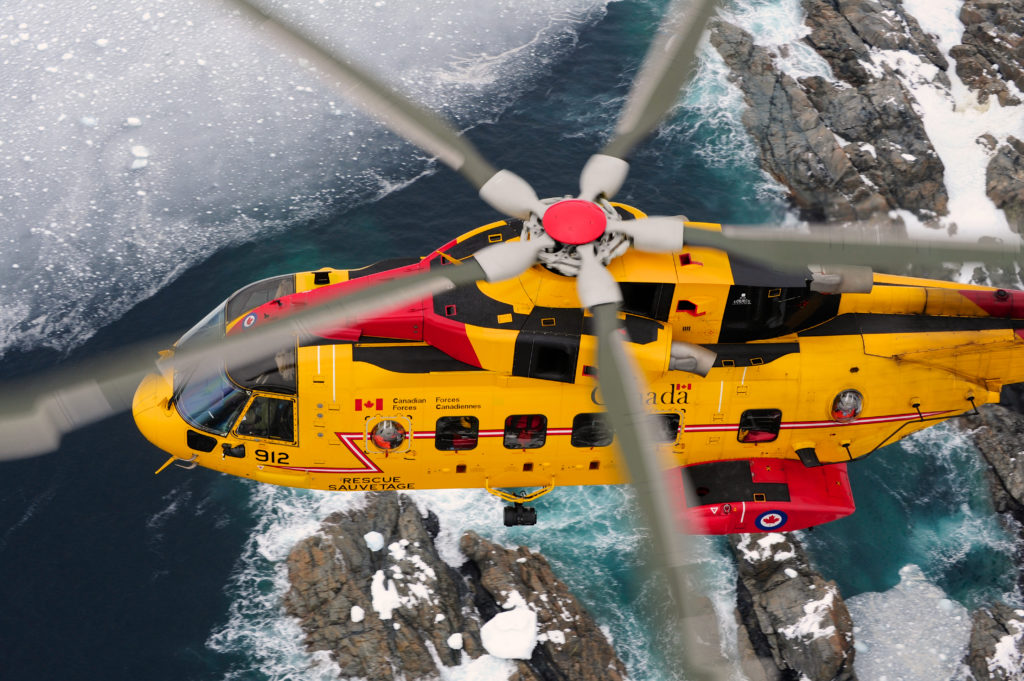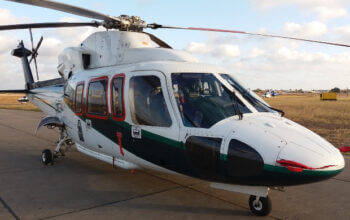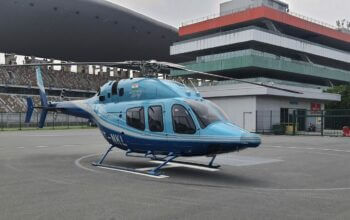Estimated reading time 7 minutes, 45 seconds.
When the Department of National Defence (DND) finalizes the statement of work for the CH-149 Cormorant Mid-Life Upgrade (CMLU), Sentient Vision is hoping a visual detection and ranging (ViDAR) optical radar will be among the requirements.

The Australian company has partnered with Heli-One, a Vancouver-based subsidiary of CHC Helicopter, to offer a Canadian manufactured version of what it says is a transformational search and rescue technology.
“We’ve coined a phrase: lost at sea, found in seconds. The system we have developed is able to autonomously find people lost at sea in seconds,” Simon Olsen, director of business development, strategy and partnerships, told Skies. “It is truly transformational. It has the unique ability to detect very small things that virtually no other system in the world has.”
Where traditional radar struggles to differentiate small objects such as a person or a rubber raft from the waves in most sea states, ViDAR has successfully demonstrated the ability to find almost all objects or persons.
“A radar works on being able to have a response back from the object, so the object needs to stand out from the ocean environment,” explained Olsen. “If the object is very small, and especially if it doesn’t have a radar cross-section, it can’t get a response back. Hence, in most search and rescue environments, when you are looking for people at sea, a rubber raft or even a small canoe . . . we currently use beacons or transponders to get a rough location, and then rely on the Mark 1 eyeball.”
That often involves a spotter in an aircraft monitoring about 0.1 nautical miles at a time.

“With ViDAR, we can look out two to 2.5 nautical miles from that aircraft and have an almost 100 per cent certainty of finding every person lost at sea immediately,” he said.
The Royal Canadian Air Force (RCAF) has been analyzing options for a life-extension program that would see the CH-149 fleet of 14 search and rescue helicopters remain in service until around 2040. The project secured long-term funding with the release of the Liberal government defence policy in June 2017.
And a year later, in April 2018, Public Services and Procurement Canada posted a letter of notification (LoN) outlining its intent to conduct a sole-source negotiation with Leonardo, formerly AgustaWestland, to replace, modify or upgrade current and projected obsolete systems based on the Norwegian AW101-612 All-Weather Search and Rescue Helicopter (NAWSARH) model, which began entering service in December 2017.
The LoN also indicated that the government would proceed with a plan to “augment” the current fleet by upgrading as many as seven of nine VH-71 aircraft, variants of the AW101, acquired from the U.S. government in 2011 ostensibly for spare parts.
Olsen said the Canadian program presents an opportunity to not only work with a highly regarded Canadian partner, but also to develop and prove a solution that could then be exported to other military and civilian search and rescue programs.

“If we have the opportunity to partner with [Team Cormorant] to supply this technology to the Canadian government, we see tremendous export appeal to other markets in which these helicopters operate,” he said of the team led by manufacturer Leonardo Helicopters and in-service support provider, IMP Aerospace & Defence. “We are configuring this to be able to retrofit it to existing aircraft of a similar kind.”
The ViDAR hardware consists of a small, lightweight pod that can be mounted to multiple points on an aircraft and is then integrated with the onboard mission system.
“We don’t want to add any risk or complex technical integration, so we’ve focused on making it easy to integrate and use,” said Olsen. “Operationally, there is no new mission system, there’s no new mapping system. All we do is send a location on a map and a thumbnail image of the object we find in the water. The operator can click that image and it slews the existing sensors they have on the aircraft to investigate that object.”
It was still being developed when the Canadian government released the statement of requirements for the fixed-wing search and rescue project, but Olsen said ViDAR could be readily added to the Airbus CC295 when it enters service with the RCAF. Air Force members have seen the system in action and are well aware of the capability, he added.
The U.S. Coast Guard conducted a “fairly exhaustive” trial in 2016 at which, of the various radars evaluated, “we were the only one that found 100 per cent search and rescue targets in a range of sea states,” he said.

The Coast Guard subsequently incorporated it into its Insitu ScanEagle unmanned aerial platforms for counter-narcotics operations in the Caribbean and off the southern coast. ViDAR is also being employed by the Australian Maritime Safety Authority’s Bombardier Challenger 604 jets in a search and rescue capacity.
By partnering with Heli-One and CHC Helicopter, which operates an extensive global search and rescue network, Olsen said there is an opportunity to develop a solution with a Canadian stamp on it that the government can take ownership of and help to export.
“With the unique relationship between Heli-One and CHC, we clearly see an opportunity to extend this, not just along the path of where the Cormorant goes with Leonardo, but to work with CHC on a range of search and rescue operations they have all around the world.”








